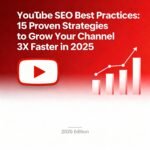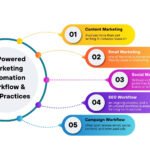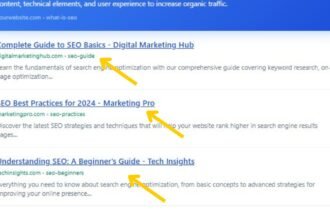If you think content marketing is just about churning out blog posts and sprinkling in a few keywords—think again.
What are the six areas of content marketing? It’s a question every serious marketer should ask and answer with precision. After working with dozens of B2B brands, SaaS startups, ecommerce founders, and marketing agencies, I’ve seen one thing consistently separate top performers from the rest: a mastery of all six core pillars of content marketing.
Neglect one, and your entire strategy starts limping. Nail all six, and you create a system that drives consistent traffic, builds trust, and delivers conversions at scale.
Let’s break down these six essential areas—layering in LSI and NLP keywords naturally—so you’re not just publishing content, you’re powering growth.
Content Strategy: The Engine Room of All Great Marketing
Before a single word gets written, a high-impact content marketing strategy must be in place. Strategy is where clarity meets creativity. It answers the why, who, what, where, and how of your entire content ecosystem.
You need to define:
- Your business objectives (What are you trying to achieve?)
- Audience research (Who exactly are you speaking to?)
- Content formats (What will you publish—blogs, videos, infographics?)
- Content calendar (When and how often?)
- KPIs (What metrics will show it’s working?)
Content Creation: The Heartbeat of Audience Engagement
This is the part everyone loves—but few do right. Content creation means delivering real value, consistently, across the right formats. Forget generic blog posts. You need content that educates, entertains, and earns attention.
Your arsenal should include:
- Blog writing with depth and structure
- Video marketing that captures attention in 3 seconds
- Podcast production for long-form thought leadership
- Infographics to visualize data
- Case studies that prove ROI
Tip: Content that answers real audience questions earns 94% more clicks than fluffy “me-too” posts (Moz, 2024).
Content Optimization: Make Google Fall in Love With Your Content
Creating content without optimization is like building a brilliant store in the desert—no one will find it. This is where SEO and user experience collide.
Your focus should include:
- Keyword research (using both short-tail and long-tail keywords)
- On-page optimization (titles, H1s, URL structure, internal links)
- LSI keywords and NLP phrases for semantic richness
- Mobile-first design
- Metadata that actually compels clicks
Did You Know? 75% of users never scroll past the first page of search results (Search Engine Land, 2024). That’s why content optimization is non-negotiable.
Content Distribution: Don’t Just Publish—Push It to the Right Places
Here’s the uncomfortable truth: even the best content won’t perform if no one sees it. Content distribution is about smartly getting your content in front of your audience wherever they spend time.
Top channels include:
- Social media platforms (LinkedIn, Instagram, Twitter)
- Email marketing
- Influencer and partner collaboration
- Content syndication on Medium, Reddit, or Quora
- Community platforms and niche forums
Fact Check: Distributing content across three or more channels increases engagement by 250% (HubSpot, 2024).
Content Promotion: Add Firepower with Paid Channels
Not all traffic is organic—and that’s okay. Content promotion involves paid tactics to accelerate reach, build brand awareness, and capture leads faster.
High-performing tactics:
- Paid advertising (Google Ads, Meta Ads)
- Sponsored content and collaborations
- Influencer shoutouts and mentions
- Content retargeting ads
- Lookalike audiences to scale your reach
Insider Stat: Promoted content outperforms organic content by up to 6x in reach and engagement (Social Media Examiner, 2023).
Content Measurement & Analytics: What Gets Measured, Gets Improved
Finally, we land on the sixth (and arguably most overlooked) pillar: content measurement and analytics. This is where your content becomes smarter.
Track everything:
- Website traffic
- Engagement time
- Bounce rates & exit pages
- Conversion rate & sales attribution
- ROI from organic vs. paid content
Data-Driven Truth: 84% of marketers say data analytics help refine their content strategy and boost ROI (Content Marketing Institute, 2024).
The Six Areas of Content Marketing & Their Essential LSI/NLP Keywords
If you want to elevate your SEO game, knowing what the six areas of content marketing are is just the start. The real edge comes from layering in LSI (Latent Semantic Indexing) and NLP (Natural Language Processing) keywords across each content category.
These related terms give your content depth, context, and semantic relevance—helping Google and your audience understand the full picture.
| Area | Example LSI/NLP Keywords |
| Content Strategy | content plan, audience research, content calendar, brand voice, goals |
| Content Creation | blog writing, video marketing, storytelling, podcast production |
| Content Optimization | SEO, keyword research, on-page optimization, LSI keywords, meta tags |
| Content Distribution | social media marketing, email marketing, influencer outreach |
| Content Promotion | paid advertising, content amplification, PPC, sponsored content |
| Content Measurement | content analytics, performance metrics, ROI, Google Analytics, CTR |
Tip: Sprinkle these contextual phrases naturally into your content, headings, meta descriptions, and image alt text. They work like magnets for semantic search and voice queries.
5 Practical Ways on How to Use LSI and NLP Keywords Without Stuffing or Sounding Robotic
Let’s be real—nobody wants to read content that feels like it was written by an SEO bot. Here’s how to use LSI and NLP keywords naturally in your content while boosting visibility and staying human-first:
1. Map Keywords to Each Content Section
When you’re writing a blog, pillar page, or landing page, assign LSI/NLP keywords to specific areas.
Example: For a blog on content distribution, use terms like email newsletters, content syndication, or influencer outreach to support your core theme.
2. Prioritize Search Intent
Not all keywords are equal. Some reflect curiosity (“what is content optimization?”), while others signal buyer intent (“best content distribution tools”).
Use a mix of informational, navigational, and transactional NLP queries.
3. Use Tools That Highlight LSI & NLP Phrases
Platforms like Surfer SEO, Frase.io, or PageOptimizer Pro reveal semantically linked keywords used by top-ranking pages. Use them to craft smarter outlines and headers.
4. Don’t Neglect Structured Data
Add schema markup to help Google better understand your content hierarchy—especially for blog posts, FAQs, videos, and product reviews.
5. Avoid Keyword Cannibalization
Assign each major keyword theme (like “content strategy”) its own page or pillar to avoid competing with yourself in SERPs. Link related content together with strong internal linking.
Conclusion: Why Knowing the Six Areas of Content Marketing Changes Everything
So—what are the six areas of content marketing? They’re not just boxes to check. They’re six deeply interconnected levers that, when pulled in sync, turn your content from a marketing expense into a marketing asset.
Let’s recap what mastering each area unlocks:
- Content Strategy gives you clarity and direction.
- Content Creation brings your brand voice to life.
- Content Optimization makes sure your content gets seen.
- Content Distribution gets it shared in the right places.
- Content Promotion helps it scale with paid muscle.
- Content Measurement helps you improve and iterate.
Most businesses dabble in one or two of these. The best brands? They orchestrate all six like a symphony.
If you’re serious about building authority, scaling traffic, and generating revenue through content marketing, this six-part framework isn’t optional—it’s essential.
And when you embed high-impact LSI and NLP keywords into each of these areas? You don’t just rank—you resonate.
Frequently Asked Questions
Why is it important to understand what the six areas of content marketing are?
Because content marketing isn’t just about content creation. Each of the six areas plays a strategic role in driving ROI. Without understanding all six, your marketing efforts are likely to be fragmented and underperforming.
How do I measure success across all six content marketing areas?
Use a mix of analytics tools like Google Analytics, Search Console, SEMrush, and HubSpot. Track performance metrics like traffic, bounce rate, engagement time, conversion rates, and ROI. Align these with your original KPIs from your content strategy.
What’s the difference between content distribution and content promotion?
Great question. Content distribution focuses on organic channels—like social media, email newsletters, or syndication. Content promotion involves paid efforts—like running ads, boosting posts, or partnering with influencers for sponsored content.
How often should I revisit my content marketing strategy?
At minimum, do a quarterly review. But for high-growth teams or campaigns running at scale, a monthly performance audit is ideal. Always align with evolving business objectives, SEO trends, and audience behavior.
What are the best tools to manage all six areas effectively?
Some go-to tools:
- Strategy: Notion, Trello, HubSpot
- Creation: Grammarly, Canva, Descript
- Optimization: Surfer SEO, Clearscope, Yoast
- Distribution: Buffer, Mailchimp, Hootsuite
- Promotion: Meta Ads Manager, Google Ads
- Measurement: Google Analytics, Databox, SEMrush
Sources
- Caspian Studios: What are the 6 areas of content marketing?
- RELEVANCE: What Are the 6 Areas of Content Marketing?
- PageOptimizer Pro: Incorporating LSI Keywords for Better SEO
- DataDab: LSI Keywords to Improve SaaS Content Relevance
- RGray: 6 Types of Content Marketing That Work Best
- Contently: Natural Language Processing and SEO Strategy
- Engage2Engage: Using LSI Keywords for SEO
Bottom line?
If you’re wondering what are the six areas of content marketing, now you know. More importantly—you now understand how to turn each one into a performance powerhouse.
Content isn’t king. Strategic content is.
Want help implementing this framework for your brand or business? Drop a comment or reach out—because you shouldn’t be guessing with your content marketing anymore.












